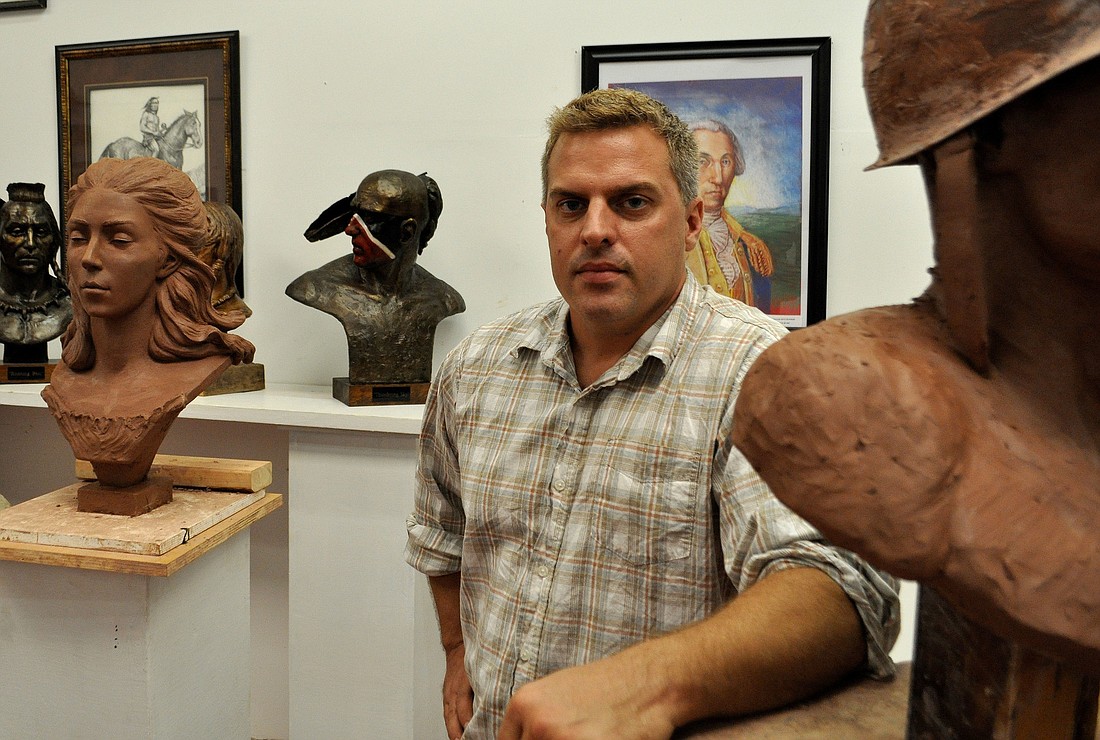- November 25, 2024
-
-
Loading

Loading

Greg Marra, a classically trained sculptor, wanted to carve his niche within his line of work, so, the New Jersey native combined his two loves: preserving history and molding clay into works of art.
A practicing artist since 1998, Marra was originally a painter, who traveled to Europe to study. He didn’t begin sculpting until he experienced an eye-opening encounter with another artist in 2001.
“I shook the hand of a well-known painter, and I knew I wasn’t meant to paint,” says Marra. “I needed to do something more physical. It seemed simpler to me — it’s one color; it’s three-dimensional. It (scuplting) was my calling.”
Marra says that when it comes to keeping history alive, the power of a statue shouldn’t be underestimated.
“Statues are extremely powerful,” he says. “They can define and conclude how people perceive an entire war. They can set the tone for the rest of the country.”
In 2008, while Marra was in Zohor, Slovakia, he experienced this power firsthand. He was working for a construction company, owned by his wife’s family, when one of the employees told him about an American B-24 bomber who had crashed nearby during World War II.
Driven by his love of history, Marra went to see if he could find the crash site. Much to his surprise, he discovered a monument had been built to commemorate the airmen who died in the crash. It had become overgrown with brush.
“I just felt compelled to clean it up and hang up American and Slovak flags,” says Marra. “I could feel the impact, smell the jet fuel and sense the energy at the monument. It made me think about the sacrifice of our soldiers.”
After doing some research, Marra learned that after the plane crashed in 1944, the people of Zohor conducted a secret funeral to honor the deceased pilots. By recognizing members of the U.S. military, Marra says the Slovaks were taking a big risk. In 1995, the monument was erected, and a tombstone, which had been hidden since the war, resurfaced and was added to the memorial.
In November, Marra received a phone call from a Pennsylvania man named Ray Hadden, whose father was the tail gunner in the downed bomber. As Hadden was doing online research on his father, he stumbled upon an article detailing Marra’s efforts to clean up the monument. Hadden thanked Marra and informed him that none of the airmen’s families had known the memorial existed.
After their conversation, Marra decided that he wants to thank the people of Zohor for their bravery by building two matching statues — one to be placed in each country.
“I think a gesture like that would be really special,” says Marra. “Everyone knows that the Statue of Liberty was a gift to us. Shouldn’t we get in the habit of doing the same? I think people need to know the story of what a little town in Europe did for us 68 years ago.”
Contact Nick Friedman at [email protected].